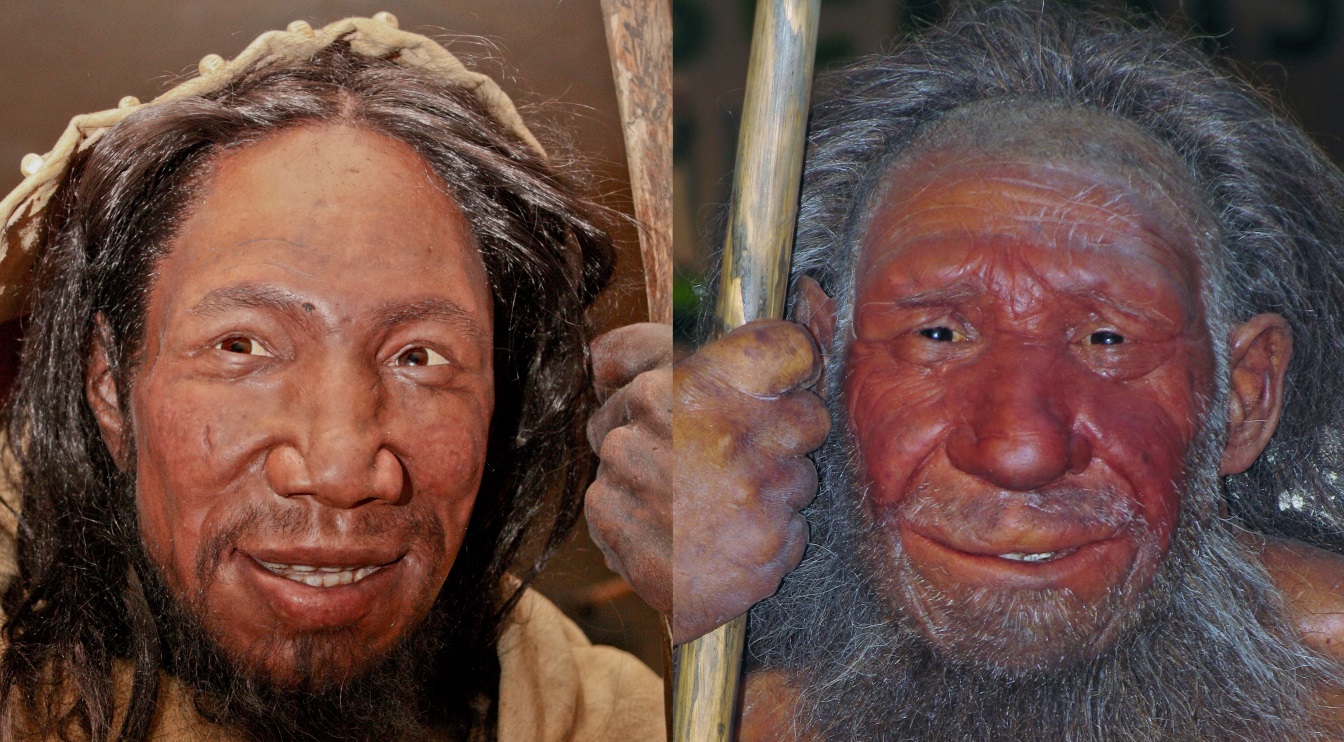


 النبات
النبات
 الحيوان
الحيوان
 الأحياء المجهرية
الأحياء المجهرية
 علم الأمراض
علم الأمراض
 التقانة الإحيائية
التقانة الإحيائية
 التقنية الحيوية المكروبية
التقنية الحيوية المكروبية
 التقنية الحياتية النانوية
التقنية الحياتية النانوية
 علم الأجنة
علم الأجنة
 الأحياء الجزيئي
الأحياء الجزيئي
 علم وظائف الأعضاء
علم وظائف الأعضاء
 الغدد
الغدد
 المضادات الحيوية
المضادات الحيوية|
أقرأ أيضاً
التاريخ: 5-5-2021
التاريخ: 2-1-2020
التاريخ: 2025-04-07
التاريخ: 24-3-2021
|
What does it mean to have Neanderthal or Denisovan DNA?
Several direct-to-consumer genetic testing companies report how much DNA a person has inherited from prehistoric humans, such as Neanderthals and Denisovans. This information is generally reported as a percentage that suggests how much DNA an individual has inherited from these ancestors. The percentage of Neanderthal DNA in modern humans is zero or close to zero in people from African populations, and is about 1 to 2 percent in people of European or Asian background. The percentage of Denisovan DNA is highest in the Melanesian population (4 to 6 percent), lower in other Southeast Asian and Pacific Islander populations, and very low or undetectable elsewhere in the world.
Neanderthals were very early (archaic) humans who lived in Europe and Western Asia from about 400,000 years ago until they became extinct about 40,000 years ago. Denisovans are another population of early humans who lived in Asia and were distantly related to Neanderthals. (Much less is known about the Denisovans because scientists have uncovered fewer fossils of these ancient people.) The precise way that modern humans, Neanderthals, and Denisovans are related is still under study. However, research has shown that modern humans overlapped with Neanderthal and Denisovan populations for a period, and that they had children together (interbred). As a result, many people living today have a small amount of genetic material from these distant ancestors.
Scientists have sequenced Neanderthal and Denisovan genomes from fossils discovered in Europe and Asia. This genetic information is helping researchers learn more about these early humans. Determining which areas of the genome are shared with archaic humans, and which areas are different, will also help researchers find out what differentiates modern humans from our closest extinct relatives.
In addition to the percentage of Neanderthal or Denisovan DNA, direct toconsumer testing reports may include information about a few genetic variants inherited from these ancestors that influence specific traits. Studies have suggested that certain genetic variations inherited from archaic humans may play roles in hair texture, height, sensitivity of the sense of smell, immune responses, adaptations to high altitude, and other characteristics in modern humans. These variations may also influence the risk of developing certain diseases. However, the significance of Neanderthal or Denisovan genetic variants on disease risk is still an area of active study, and most direct-to-consumer test results currently do not include them.
While knowing how much DNA a person has in common with his or her Neanderthal or Denisovan ancestors may be interesting, these data do not provide practical information about a person’s current health or chances of developing particular diseases. Having more or less DNA in common with archaic humans says nothing about how “evolved” a person is, nor does it give any indication of strength or intelligence. For now, knowing which specific genetic variants a person inherited from Neanderthal or Denisovan ancestors provides only limited information about a few physical traits.




|
|
|
|
للعاملين في الليل.. حيلة صحية تجنبكم خطر هذا النوع من العمل
|
|
|
|
|
|
|
"ناسا" تحتفي برائد الفضاء السوفياتي يوري غاغارين
|
|
|
|
|
|
|
نحو شراكة وطنية متكاملة.. الأمين العام للعتبة الحسينية يبحث مع وكيل وزارة الخارجية آفاق التعاون المؤسسي
|
|
|